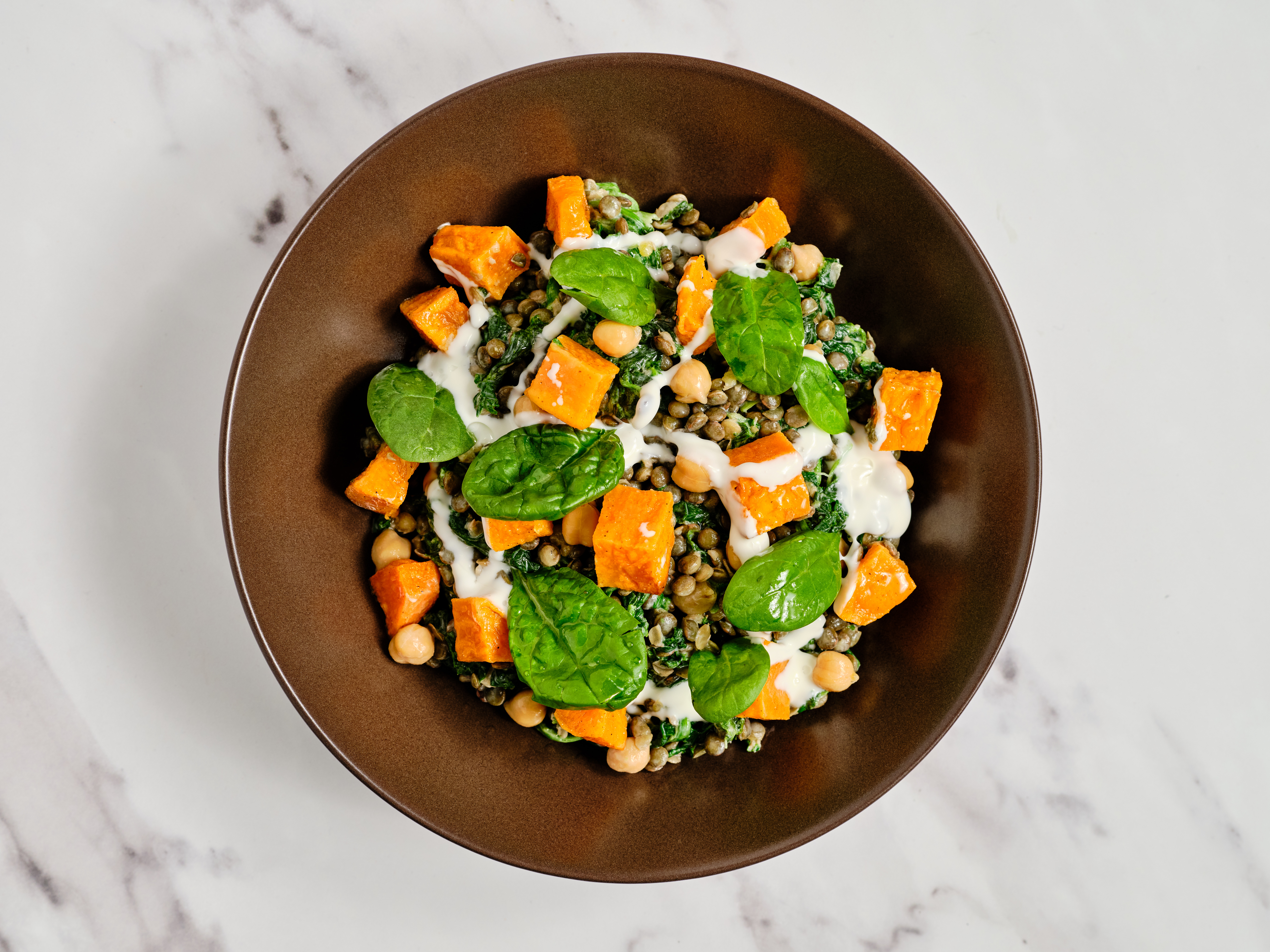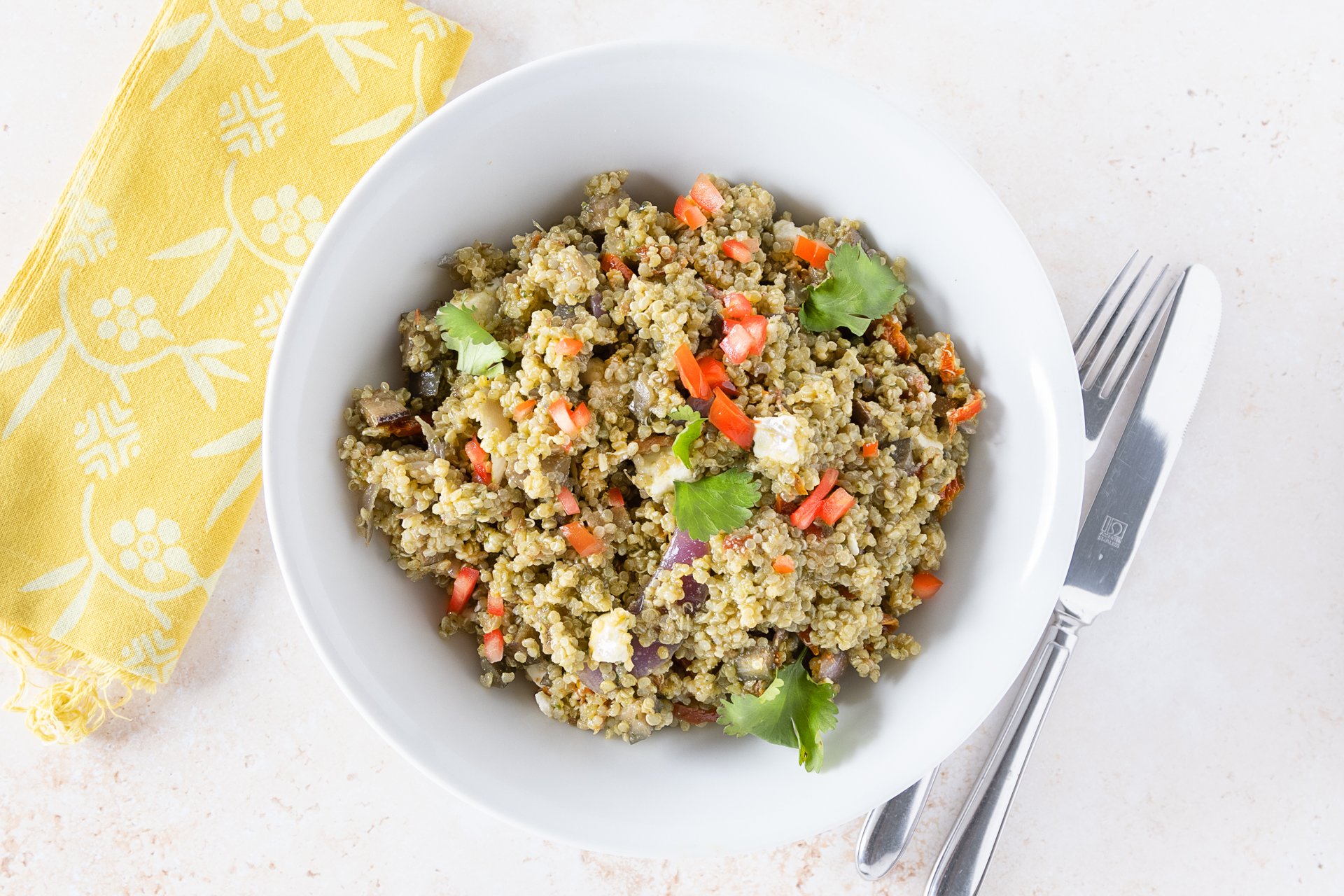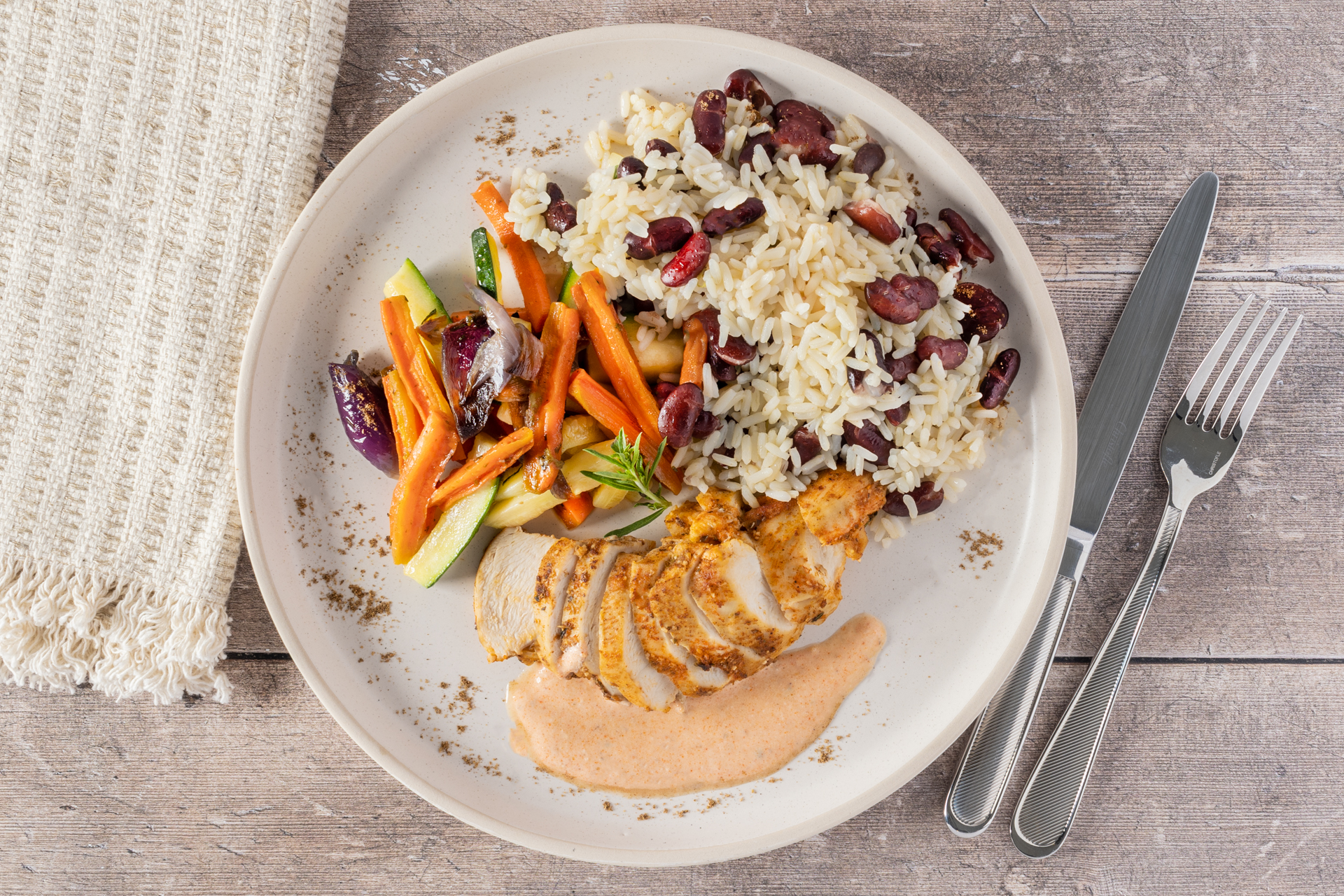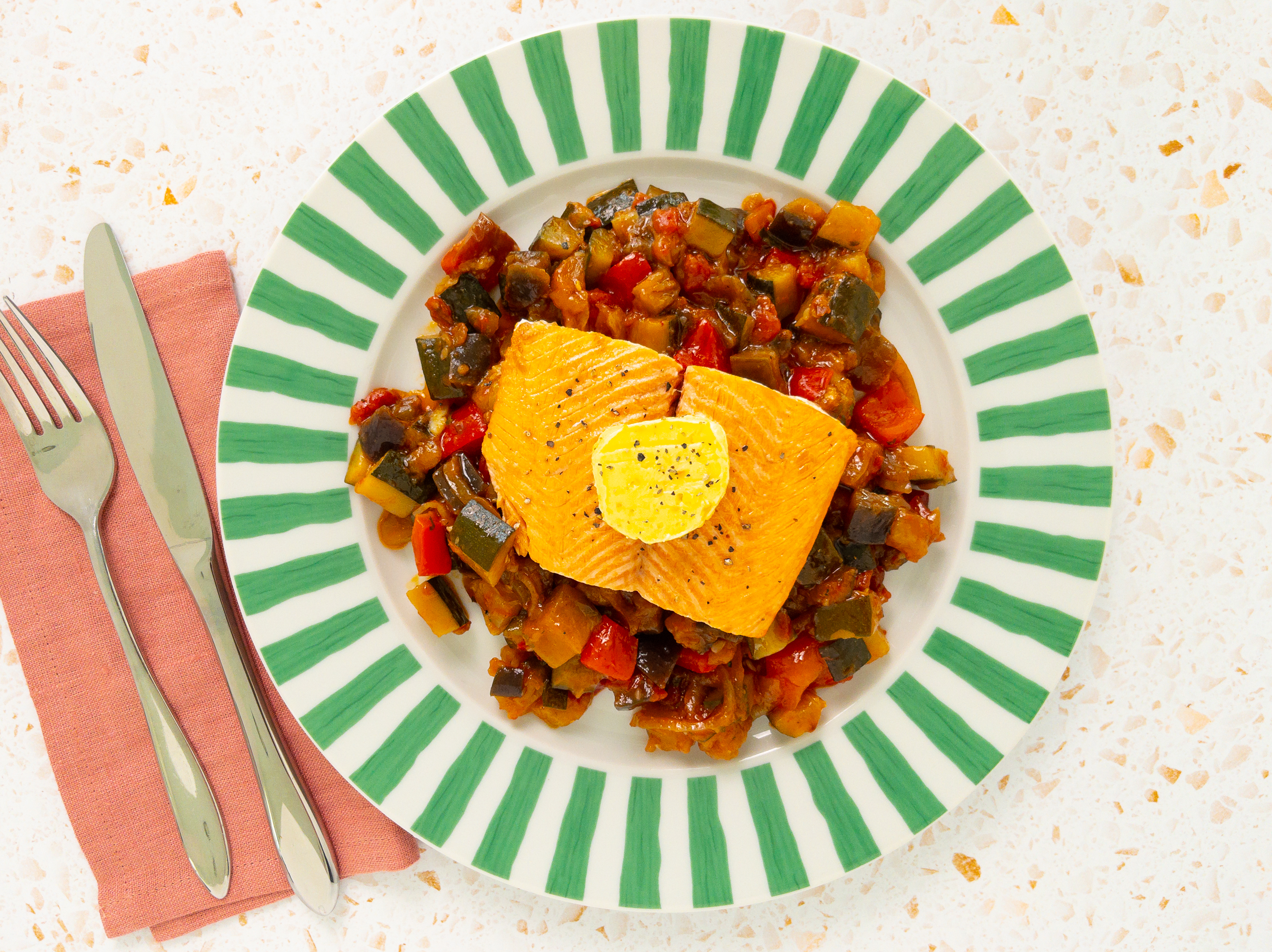Meal prep: A beginner’s guide to stress-free, healthy meals

Meal prep is the practice of preparing your food in advance for several meals. Having a few dishes ready to go in your fridge can make life a lot easier if you have a busy work week. Here are our tips on how you can get started.
What is meal prep?
People approach meal prep in different ways, from batch cooking recipes and freezing them for later to simply pre-chopping vegetables and storing them in Tupperware to speed up mid-week recipes.
If you don’t like eating the same meal too often, with meal prep you can also prepare several different key elements (carbs, vegetables, and proteins) and then combine them to make different dishes throughout the week. For example, if you cook a large roast chicken at the weekend, you could reuse the cold chicken in a Caesar salad, and then make a chicken soup later in the week.

What are the benefits of meal prep?
There are many reasons why meal prep may be worth a try. Here are our top 5:
- Save time on busy days: by cooking more than you need when you have extra time on your hands you can generate leftovers which then make your weekdays more manageable. If you come home late from work, it can be a real relief to know that dinner has already been started.
- Minimise waste: by planning your meals in advance you can be more careful about what you buy and make sure that all your leftovers get used up.
- Budget effectively: planning in advance can also means that you can budget more effectively, plus reducing food waste is a great way of saving money.
- Eat healthier meals: prepping your own meals from scratch is likely to be healthier than takeaways or processed food. Again, a bit of extra planning in advance can also help you make sure that you’re eating balanced and healthy meals.
- Source your ingredients sustainably: when planning your meals ahead, it’s easier focus on vegetables that are in season, this will help with your budget and mean that you eat more sustainability.
What are the disadvantages of meal prep?
There are a few disadvantages to trying to meal prep.
- Requires pre-planning: the cognitive load for doing meal prep successfully, in a way that is varied and healthy shouldn’t be ignored. It takes quite a lot of practice and planning to get it right.
- Can be repetitive: if you’re batch cooking then you will be eating a lot of the same ingredients throughout the week. Even if you add sauces and combine ingredients differently having the same meats and vegetables multiple times can feel repetitive.
- You may lose some freshness: If you choose to pre-slice your vegetables and store them in the fridge for quick use, you may find that you lose some crunch and some flavour compared to when they were fresh.
- Requires plenty of fridge or freezer space: depending on how many meals you’re prepping you will need quite a bit of fridge and freezer space to store all the different components.
- Uses up your days off: while you’ll be saving time on busy days you may have to sacrifice more time in your weekends to get everything set up. If you prefer to have a real break and switch off, then meal prep may not be for you.
The best ingredients for meal prep
When you’re planning to do a week of meal prep, you’ll want to focus on foods with a long shelf life. Here are some of our recommendations for fresh and healthy ingredients that you can incorporate, and which won’t go bad in your fridge. For meat eaters it’s probably best to cook the meat earlier in the week when it’s freshest.
- Carrot sticks, bell peppers, celery, courgettes – these ingredients are great options as they can be pre-chopped into batons and will keep their crunch for several days.
- Cabbage and kale – these are sturdy greens that won’t go off (or go soggy) in a week. We also recommend swapping more delicate lettuces like Batavia, for more sturdy varieties like iceberg lettuce.
- Beans, chickpeas, lentils – beans will last a long time in your store cupboard, and they don’t lose their flavour when cooked and kept for a few days.
- Walnuts, pine nuts, sunflower seeds – these are a great easy topping to add variety and can be kept in your store cupboard for a long time until they’re needed. They also make for a great, healthy snack.
- Ginger, chillies, garlic, lemons, onions – if you want to add some fresh flavours later in the week then these ingredients are your friend. They’re packed with flavour and last a long time in the fridge.
- Eggs – eggs make an easy addition to many meals, are a great source of vegetarian protein, don’t take long to cook and last for plenty of time before they go off. Top tip: if you aren’t sure if an egg is good to eat try placing it in a pan of water, if it sinks then it should be safe whereas if it floats you need to throw it out.
- Apples and oranges – these sturdy fruits will last a long time in your fruit bowl and can be used to brighten up a salad.
- Olives and sundried tomatoes – these ingredients have been preserved to last but are still packed with nutrients and can help add a new flavour to you dishes later in the week.
What are some easy meal prep recipes?
If you’re looking for some ideas for meals to prep in advance, check out the recipe section of this blog, or read our example menu below.

Example meal prep weekly menu
- Meal 1: Penne & Bolognese – batch cook your favourite Bolognese recipe. Chop more onions and carrots than needed and store the extra in a Tupperware for later. Cook double portions of penne to serve with the Bolognese and also to reuse later in the week.
- Meal 2: Chicken with teriyaki sauce – cook 2 portions of chicken and extra teriyaki sauce so you can reuse both later in the week. Also cook an extra portion of noodles. Simply coat the chicken in the sauce and roast it in the oven the serve it on a bed of noodles (or konjac noodles for a low-carb option) with some steamed spinach leaves.
- Meal 3: Halloumi pineapple and quinoa salad – this tasty recipe can be enjoyed hot or cold. You can re-use the onions that you stored from the Bolognese and cook extra halloumi and quinoa to reuse later.
- Meal 4: Penne and pesto – reuse your penne and mix in pesto, sundried tomatoes, olives and pine nuts for added nutrients and crunch.
- Meal 5: Chili con carne - reuse your Bolognese as a base but add Mexican spices, paprika, chili powder and red kidney beans to transform the flavour into a version of a chili con carne. Make a double portion of rice to serve with the chili and re-use later in the week.
- Meal 6: Halloumi rice salad – For today’s meal all you’ll need to do is fry some courgettes with your pre-chopped onions and plenty of lemon juice. Add in your leftover rice and halloumi and heat everything together with a splash of soy sauce.
- Meal 7: Pesto & chicken quinoa bowl – combine your leftover quinoa, chicken, pesto, carrots, and onions with some sundried tomatoes to make a refreshing salad. No cooking needed.
- Meal 8: Vegetable noodle stir-fry – In a hot pan fry your leftover onions, carrots, and courgettes. Tip in your leftover noodles and add some fresh spinach leaves before adding your leftover teriyaki sauce. If you like you can top the dish with a fried egg for added protein.
Here’s a table to give you an idea of how different meal components are being re-used in new combinations:
|
Meal |
Batch cooked |
Leftovers used |
Stores used |
|
Penne Bolognese |
Penne Bolognese Chopped onions Chopped carrots |
|
Parmesan |
|
Chicken with teriyaki sauce |
Chicken Teriyaki sauce Noodles |
|
Spinach leaves |
|
Halloumi, pineapple & quinoa salad |
Halloumi Quinoa |
Chopped onions |
Pineapple |
|
Penne & Pesto |
Pesto |
Penne |
Sundried tomatoes Olives Pine nuts |
|
Chili con carne |
|
Bolognese Rice |
Mexican spices Kidney beans |
|
Halloumi rice salad |
Courgettes |
Halloumi Rice Chopped onions |
Lemon juice Soy sauce |
|
Pesto & chicken quinoa bowl |
|
Quinoa Chicken Pesto Chopped carrots Chopped onions |
Sundried tomatoes |
|
Vegetable noodle stir-fry |
|
Noodles Teriyaki sauce Chopped carrots Chopped onions Courgettes |
Spinach leaves Egg |
What are the key points for healthy meal prep?
If you’re starting to meal prep, it can be easy to focus on the meat and the carbs, but don’t forget to include vegetables with every meal as they’re an essential part of any diet. We recommend having a few options on hand that you can heat up quickly and serve on the side, like peas or spinach.
It’s also important to make sure that you still get plenty of variety in your diet so you’re getting all the different nutrients you need. If you’re trying to do healthy meal prep, we don’t recommend batch cooking one dish and eating it for 5 days in a row.
Can I use meal prep for weight loss?
Meal prep can be a great tool if you’re trying to lose weight. Not only will it help you avoid high sugar foods but planning your menu will also help you be more aware of what you’re eating. If you struggle with portion control, we recommend putting your leftovers aside as soon as they’re cooked and before serving yourself. That way you can be sure to stick to your planned portions.
Meal prep delivery
If you don’t want the hassle of planning and prepping your meals, but still want to save time in the week, give Powermeals a try. We deliver healthy, prepared meals direct to your door. All you have to do is heat them up.


